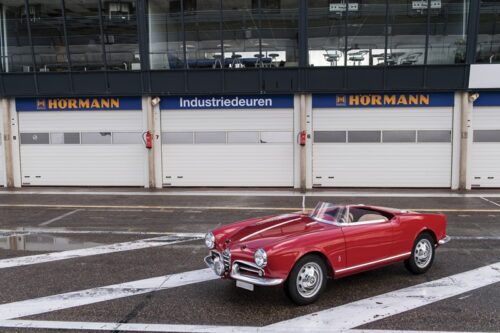
For most people, the Italian auto industry is primarily associated with Ferrari and Lamborghini, but a knowledgeable person can name at least five more brands that have put down their names into history. Today we will talk about a car manufactured under the brand founded back in 1910 in the north of Italy. Alfa Romeo Giulietta — in our weekly section «Legend Alive».
After the end of World War II, the economies of most countries were in decline and companies had to adapt to new conditions. The Alfa Romeo factory in Turin was twice as «lucky». In addition to the economic crisis, the company’s management in the person of Pasquale Gallo had, literally, to restore production from scratch. The factory was in ruins and most of the equipment was lost. Thanks to the coordinated work of the team production was restored rather quickly and the company returned to solving the second problem – restoring demand.
Before the war, a car from Alfa Romeo could only be allowed by a wealthy man (Alfa Romeo produced cars in limited editions and was considered one of the most expensive brands in Europe – editor’s note) and in the new economic conditions the company had to find a compromise between supply and demand. In spite of the fact that Alfa Romeo 6C was released in 1947, the company had to invent even new forms and come up with new ideas. Between 1950 and 1958 three new models appeared, one of which we will talk about today.
So, in 1954, Alfa Romeo Giulietta was presented at the Turin Motor Show. The coupe, created by a famous Italian designer Franco Scaglione, was enjoyed by the Italian public. A car with independent suspension equipped with a four-cylinder engine with a volume of 1290 cm3 combined a progressive design and high-quality technical stuffing. But there was a «fly in the ointment» found in that, as they say, «barrel of honey». The transmission in the new brainchild of Alfa Romeo solved one problem, but at the same time created at least three more. The engine located in front was connected through a long shaft with a gearbox and differential mounted near the rear axle, which made it possible to balance the car, but at the same time shortened the life of the bearings; the clarity of the gearshift also suffered, and the rear seat was also heated. On the one hand, this could be called a small disaster, but there were much more advantages in the new model, and a year later the company released a sedan version, and a few months later the public was presented with a two-seater model from the famous Italian company «Pinin Farina». The car could reach top speed of 165 km/h with a mass of 840 kg and time needed for acceleration to 100 km/h was reduced to 12.4 s.
With increasing demand for the car, sales volumes logically increased, too. So, in 1954, a little more than a dozen Giuliettas were sold, while in 1955-1956 the numbers rose to 1415 and 1855 units. The company continued to work on the automobile and in 1959 it was restyled. In the updated Giulietta, the fuel tank was equipped with a hatch and moved to the right rear wing. The exterior of the model underwent more significant changes. The wings became more rounded, the headlights were recessed as a result of which the car received a new head light and the radiator guard acquired horizontal stripes. Inside, the updated car repeated the outline of the exterior. The dashboard became more in-depth, and the interior itself was more compact compared to the previous version.
It seemed that this could stop restyling and make Alfa Romeo focus on new models, but the Italians went further and once again made an «upgrade» of the car. This time the car received a more powerful engine and was significantly different in appearance from its predecessors. The front of the car was decorated with square guards connected by a “shield” topped with the company logo, and the rear dimensions were much larger. Separate seats replaced the sofas in the cabin.

In middle of 1962, the successor to Giulietta appeared, and the production of the model that many loved, came to naught. In total, a little more than 177 thousand cars came off the assembly line in 9 years, some of which remain in service to this day and are sold at auctions, such as RM Sotheby’s. In January of this year, the 1960 Pinin Farina Alfa Romeo Giulietta Spider went under the hammer for $84,000. Three years earlier, at a Paris auction, Alfa Romeo Giulietta 750G Spider Competizione was sold for 476 thousand! If it seems too expensive for you, we may reassure you, it is worth its money. There were only 24 cars created in this series and 4 of them, according to various sources, have survived to this day, including the copy sold at auction.
Cover: Jon Lloyd (flickr.com)